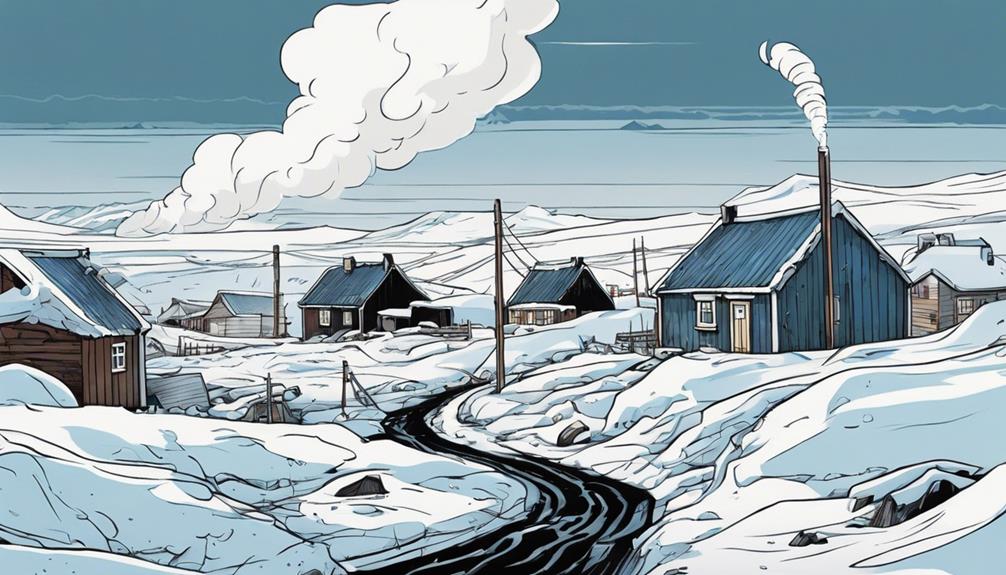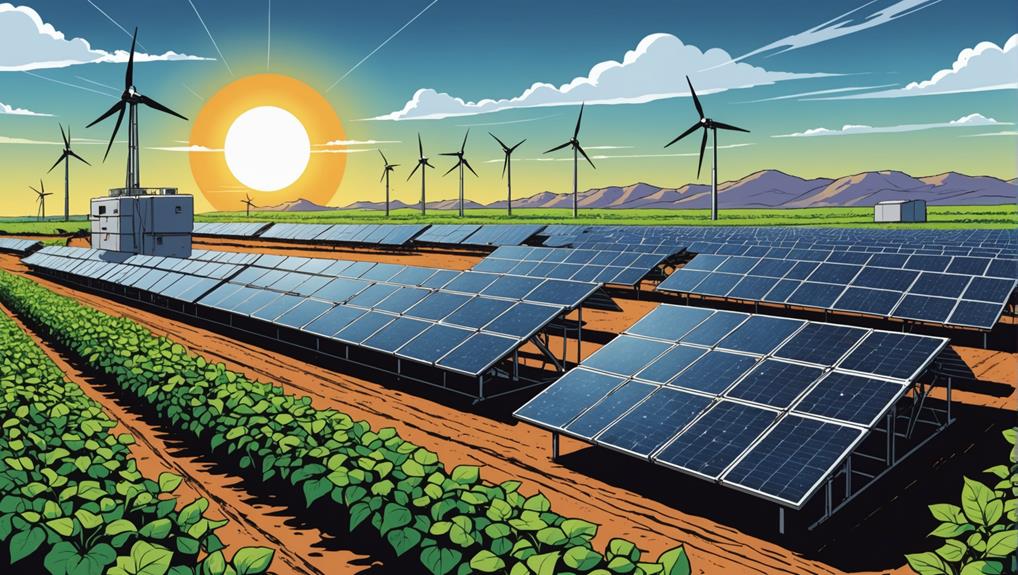You're likely aware that Iceland is a global leader in renewable energy, and a significant portion of its homes rely on geothermal energy for warmth. In fact, a whopping 66% of homes in Iceland use geothermal energy for heating. This means that almost two-thirds of the country's homes are warmed by this sustainable and renewable energy source. Geothermal energy has played an essential role in Iceland's shift away from fossil fuels, and its benefits extend beyond just heating homes. You'll soon discover just how vital geothermal energy is to Iceland's entire energy infrastructure and economy.
Key Takeaways
- 66% of homes in Iceland use geothermal energy for warmth, making it a significant contributor to the country's energy production.
- Geothermal power plants directly heat over 90% of homes in Iceland, providing efficient and reliable heating.
- The use of geothermal energy has reduced Iceland's reliance on fossil fuels for energy to 0.1%.
- Geothermal energy is used for both heating and power generation in Iceland, supporting the country's goal of being entirely powered by renewable energy.
- Over 85% of Icelandic homes are heated by renewables, with 66% using geothermal energy, making it a dominant source of heating in the country.
Geothermal Energy in Iceland
As you explore Iceland's energy landscape, you'll discover that geothermal energy plays a starring role, with a whopping 66% of homes relying on this renewable resource for warmth. This isn't surprising, given the country's unique geology, which makes it an ideal location for harnessing geothermal power.
In fact, geothermal power plants in Iceland contribute to 26% of the country's electricity production, a significant chunk of the total energy mix. What's more, geothermal energy has seen tremendous growth, with production increasing by a staggering 1700% between 1990 and 2014. This clean and sustainable energy source isn't only used for heating but also for power generation, making Iceland a leader in renewable energy.
As you explore further, you'll find that Iceland's commitment to geothermal heating has enabled the country to minimize its reliance on fossil fuels, which now contribute a mere 0.1% to the energy mix. With geothermal energy at the forefront, Iceland is well on its way to becoming a carbon-neutral nation.
History of Geothermal Heating

You'll find that Iceland's geothermal heating roots stretch back to the Viking Age when resourceful settlers first harnessed this natural energy to warm their homes and greenhouses.
As you explore the evolution of geothermal heating, you'll discover how it has transformed over time.
- In the Viking Age, settlers used geothermal energy for heating homes and greenhouses.
- By the 1970s, Reykjavík aimed to expand geothermal district heating to all houses in the capital area.
- Today, 90% of homes and buildings in Iceland are connected to district heating powered by geothermal energy.
- This shift to geothermal energy helped Iceland progress from being one of the poorest countries in Europe to one of the wealthiest.
- Geothermal energy also reduced Iceland's dependence on oil imports during the global oil crisis, making it a more energy-independent nation.
Through its rich history, Iceland has proven that geothermal energy is a reliable and sustainable way of heating homes.
Iceland's Geothermal Power Plants
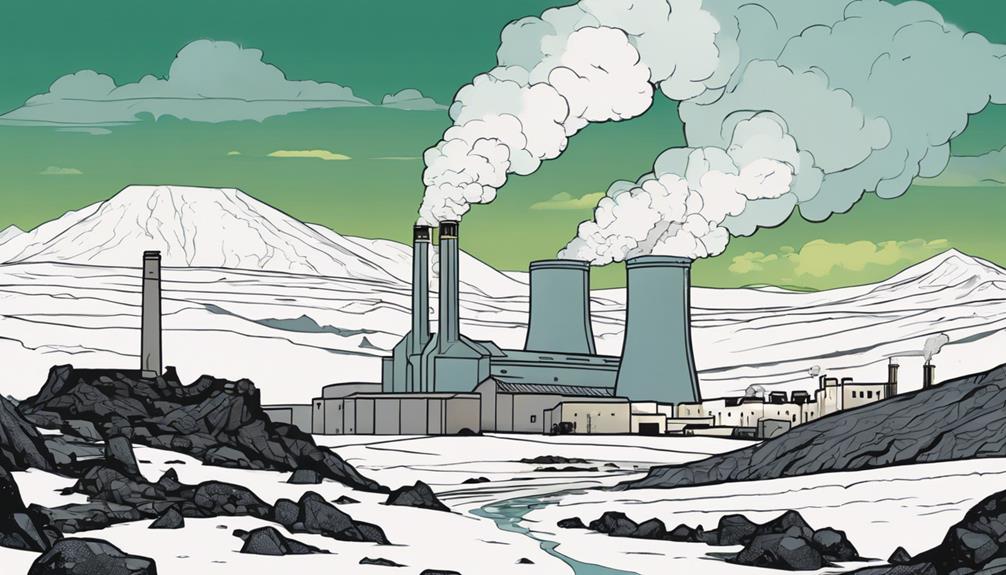
As you explore Iceland's geothermal power plants, you'll discover the country's impressive capacity for harnessing this renewable energy source.
You'll learn about the major power plants, such as Hellisheiði, Nesjavellir, and Reykjanes, which play an essential role in reducing Iceland's reliance on fossil fuels.
Geothermal Capacity
As you explore Iceland's energy landscape, you'll discover that the country's geothermal power capacity has reached an impressive 799 MW, accounting for nearly 26% of the country's total power capacity, with major power stations like HS Orka, ON Power, and Landsvirkjun driving this renewable energy source forward.
Here are some key facts about Iceland's geothermal capacity:
- The installed capacity of 799 MW makes geothermal energy a significant contributor to Iceland's electricity generation.
- Geothermal power plants like Hellisheiði, Nesjavellir, and Reykjanes are essential to the country's energy production.
- Research projects, such as the Iceland Deep Drilling Project (IDDP), aim to enhance geothermal power generation capabilities in the country.
- The geothermal capacity in Iceland allows for a significant portion of homes to be heated using this renewable source.
- As a result, Iceland is moving closer to its goal of being entirely powered by renewable energy, with geothermal capacity playing a critical role in achieving this goal.
Major Power Plants
Iceland's main geothermal power plants, like Hellisheiði, Nesjavellir, and Reykjanes, drive the nation's geothermal energy production, generating a substantial amount of power for various applications. These power plants are the backbone of Iceland's geothermal power production, and research projects like the Iceland Deep Drilling Project (IDDP) aim to enhance their capacity.
Here's a breakdown of these main power plants:
| Power Plant | Capacity (MW) | Primary Use |
|---|---|---|
| Hellisheiði | 400 | Space heating, electricity generation |
| Nesjavellir | 120 | Space heating, hot water supply |
| Reykjanes | 100 | Electricity generation, industrial processes |
As you can see, these power plants contribute significantly to Iceland's geothermal power production. The energy generated is used for direct applications such as space heating, swimming pools, snow melting, fish farming, and greenhouses. In fact, geothermal energy is used to heat over 90% of homes in Iceland, making it an essential part of the country's energy infrastructure. With continued investment in research and development, Iceland's geothermal power plants are likely to remain a crucial source of clean energy for years to come.
Direct Applications of Geothermal
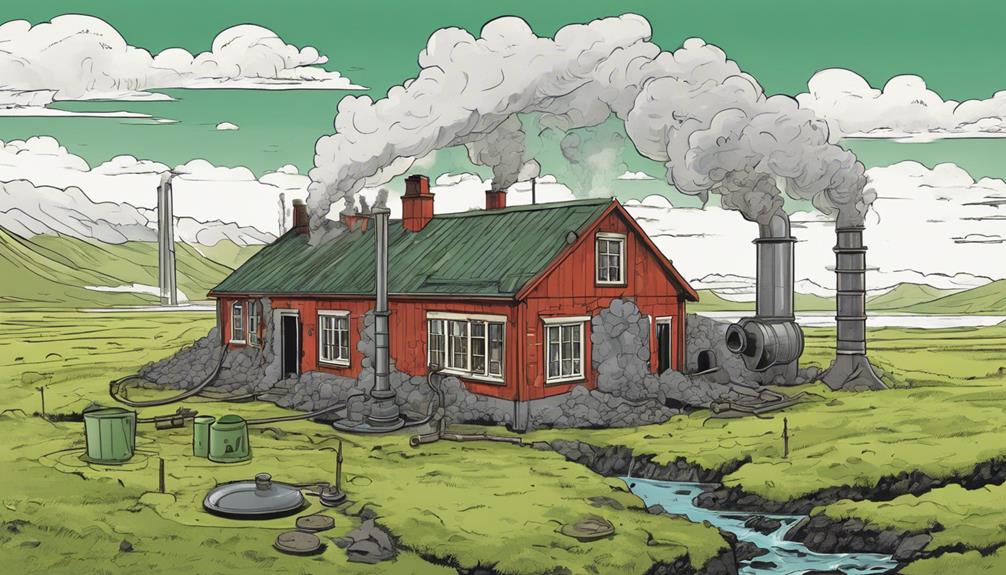
You can tap into the immense potential of geothermal energy through direct applications that reduce energy losses and support energy efficiency. By utilizing hot water from geothermal sources, you can experience the benefits of sustainable heating solutions firsthand.
In Iceland, geothermal energy is primarily used for space heating, swimming pools, and other applications that provide a direct connection to the heat source.
Here are some ways you can harness the power of geothermal energy:
- Space heating: Geothermal energy is used to warm homes and buildings, providing a reliable and efficient source of heat.
- Swimming pools: Geothermal heat is used to warm pool water, making it possible to enjoy a swim even in the coldest of temperatures.
- District heating: Hot water from geothermal sources is distributed to homes and businesses, providing a sustainable solution for heating needs.
- Fish farming: Geothermal energy is used to warm water for fish farming, supporting the country's aquaculture industry.
- Greenhouses: Geothermal heat is used to create ideal growing conditions for plants, allowing for year-round production.
Benefits of Geothermal Heating
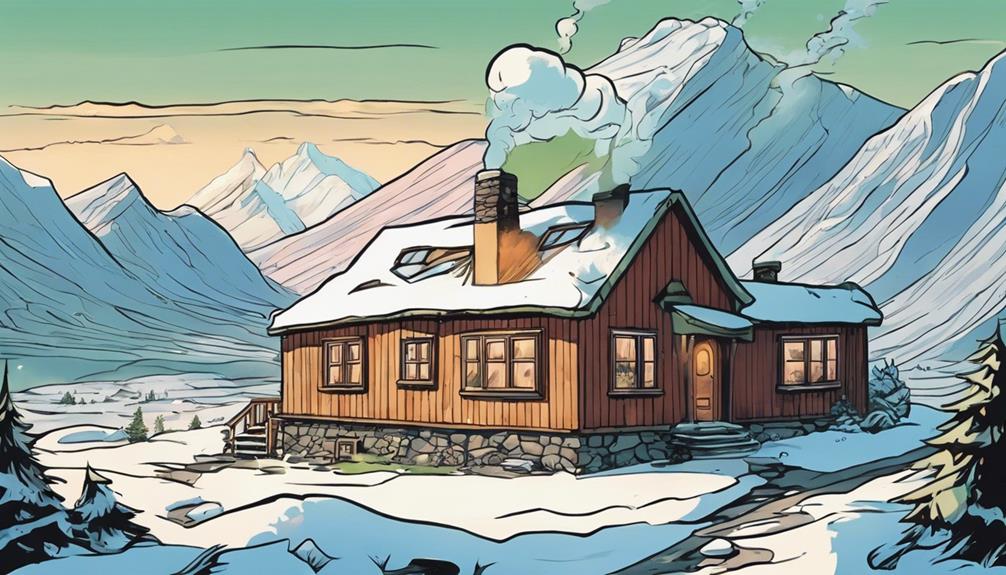
By utilizing geothermal energy for your home heating, you can experience a variety of benefits that not only enhance your daily life but also contribute to a more sustainable future.
For example, geothermal heating reduces your dependence on fossil fuels for residential heating, leading to lower carbon emissions and a cleaner environment. You'll enjoy consistent and reliable heating, contributing to energy security and stability.
The direct use of geothermal heat for home heating also minimizes energy losses compared to electricity generation, increasing energy efficiency. Additionally, geothermal heating has played a pivotal role in Iceland's energy independence and shift to renewable energy sources for residential heating.
Government Support for Geothermal

As you explore Iceland's remarkable geothermal heating system, you'll find that the government's commitment to renewable energy is a key factor in its success.
You'll discover that policies and incentives have been put in place to encourage the use of geothermal energy, and that this support is closely tied to the country's overall national energy strategy.
Renewable Energy Policy
As you explore Iceland's remarkable achievement of heating over 90% of homes with geothermal energy, you'll discover that the country's government has played a crucial role in making this possible. Iceland's government has spearheaded a robust renewable energy policy, actively promoting the adoption of geothermal energy for heating through a combination of incentives, subsidies, and investments.
This policy has been instrumental in promoting sustainable heating solutions in residential areas, reducing reliance on fossil fuels and aligning with Iceland's renewable energy objectives.
Providing government support for geothermal energy has enabled widespread adoption and made it a cornerstone of Iceland's energy independence.
Investing in geothermal infrastructure has allowed Iceland to harness its abundant geothermal resources and become a global leader in geothermal energy.
Encouraging energy independence has freed Iceland from its reliance on imported fossil fuels and enhanced the country's energy security.
Fostering a culture of sustainability, where geothermal energy is seen as a crucial component of Iceland's shift to a more environmentally friendly future.
Geothermal Incentives Offered
You can tap into government support for geothermal energy, which comes in the form of incentives and subsidies that help offset the initial costs of installing geothermal heating systems in your home. These government incentives are designed to encourage the use of geothermal energy, a cost-effective and environmentally friendly heating solution for Icelandic homes. By taking advantage of these subsidies, you can reduce the upfront costs of switching to geothermal heating, making it a more accessible option for homeowners.
The availability of government incentives has contributed significantly to the high percentage of homes in Iceland being heated by renewable sources. In fact, over 85% of homes in Iceland are heated by renewable sources, with 66% specifically utilizing geothermal energy. This is a reflection of the effectiveness of the government's support for geothermal energy.
National Energy Strategy
You're about to immerse yourself in Iceland's National Energy Strategy, which prioritizes geothermal energy as a cornerstone of its renewable energy mix, recognizing its potential to greatly reduce the country's reliance on fossil fuels. This strategy is essential in promoting geothermal energy for heating homes, making it a key component of Iceland's energy mix.
Here are some key points to take away from Iceland's National Energy Strategy:
- Geothermal energy is a key component in Iceland's energy mix, with 90% of homes heated by this renewable source.
- Government policies promote the use of geothermal energy for residential heating to reduce reliance on fossil fuels.
- Iceland's commitment to geothermal energy has resulted in over 85% of houses being heated with renewables, with 66% directly from geothermal sources.
- Geothermal energy plays a vital role in providing sustainable and efficient heating solutions for Icelandic households.
- The government's support for geothermal energy has been instrumental in achieving this high percentage of renewable heating.
Iceland's Transition to Geothermal
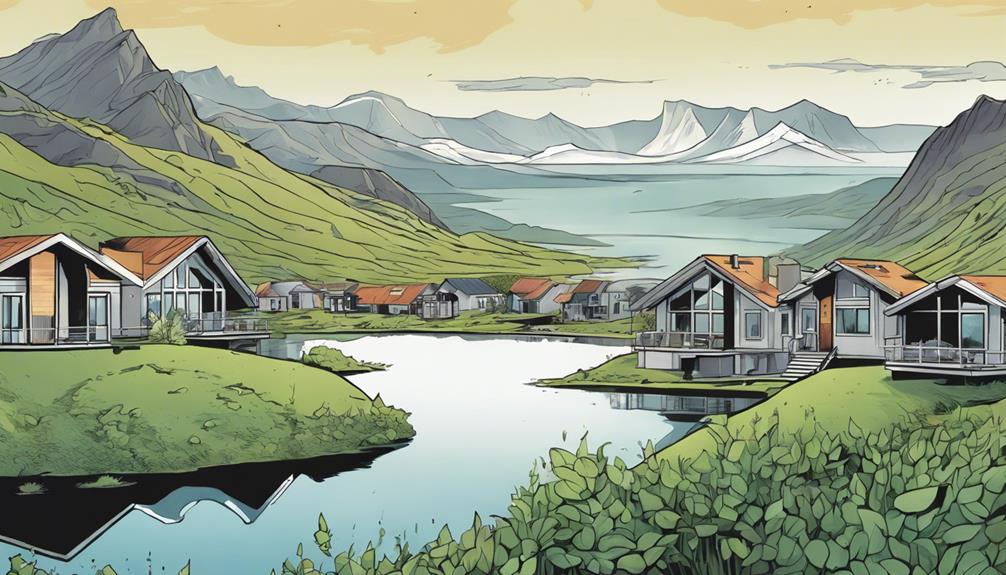
Iceland's journey to harness geothermal energy began in earnest in the 1960s when the capital city of Reykjavík set its sights on expanding district heating to all houses in the capital area by the 1970s.
You see, at that time, half of Iceland's population was still heating with oil, making them vulnerable to the fluctuations of international oil prices. The investment in geothermal energy in Iceland marked a significant shift towards renewable energy and reduced the country's reliance on oil imports.
This move proved vital during the global oil crisis in the 1970s when oil prices skyrocketed. As you know, geothermal district heating has been a game-changer for Iceland, with over 90% of homes and buildings now connected to this sustainable heating system.
This energy transformation has played a crucial role in Iceland's remarkable transformation from one of the poorest countries in Europe to one of the wealthiest. By embracing Icelandic geothermal energy, Iceland has taken a significant step towards a cleaner, more sustainable future.
Future of Geothermal Energy

As the need for hot water is projected to rise by 3%, utility companies will need to find ways to meet this growth, potentially rationing hot water during colder weather or doubling output by 2060.
You're likely wondering what this means for the future of geothermal energy in Iceland. The good news is that the country is committed to expanding geothermal district heating to all houses in the capital area by 2060. This won't only meet the increasing hot water demand but also contribute to Iceland's energy independence and shift away from oil imports.
Here are some key takeaways about the future of geothermal energy in Iceland:
- Geothermal sources will continue to play a pivotal role in meeting hot water demand
- Energy expansion plans are underway to guarantee a sufficient supply of hot water
- Hot water rationing may be necessary during peak winter months
- Iceland's goal is to maintain its energy independence through geothermal energy
- The shift away from oil will continue to rely on geothermal district heating
Frequently Asked Questions
What Country Gets 90% of Its Homes Heated by Geothermal Energy?
You're wondering which country relies heavily on geothermal energy for heating homes. Well, it's not a surprise that you're looking for a nation that's a model for sustainable energy use. You're looking for Iceland, where 90% of homes are heated by geothermal energy!
Which Country Gets More Than 90% of Its Heating From Geothermal?
You're wondering which country gets more than 90% of its heating from geothermal energy? Well, you're in luck! It's Iceland, where geothermal energy provides an astonishing amount of heating, making it a global leader in renewable energy adoption.
How Do Most Icelanders Heat Their Homes?
You step into an Icelandic home, and the warmth envelops you – surprisingly, most Icelanders heat their homes using a renewable energy source. You're likely to find that they're tapping into the Earth's natural heat, relying on geothermal energy for cozy comfort.
Are Some 70% of Iceland's Energy Needs Met From Geothermal Sources?
You're wondering if 70% of Iceland's energy needs come from geothermal sources? Yes, that's correct! Geothermal energy accounts for nearly 70% of the country's total energy needs, making it a significant contributor to their energy mix.
Conclusion
As you explore the land of fire and ice, you stumble upon a remarkable coincidence – 85% of homes in Iceland are heated by geothermal energy, a figure that mirrors the country's 85% reliance on renewable energy.
It's no accident that this pioneering nation has harnessed the power of the earth to create a sustainable future. With geothermal energy weaving its way into every aspect of Icelandic life, you can't help but wonder – what's next for this trailblazing country?
